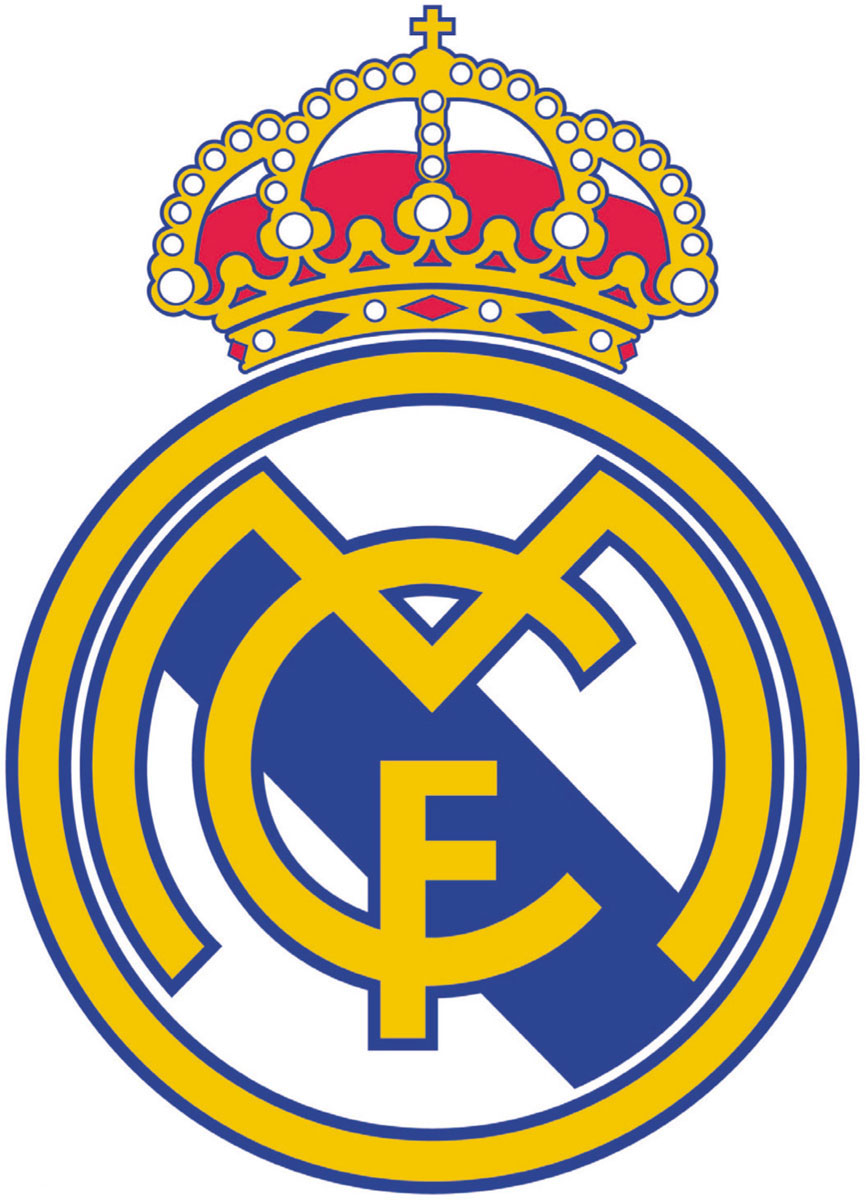
REAL MADRID
THE ROYAL CLUB
They may be the kings of Europe, but Real Madrid boasted a crown on its crest many years before its continental exploits began. The Madrid Football Club had been in existence for 18 years and had established itself as one of the nation’s top teams when King Alfonso XIII gave it his royal approval in 1920. To celebrate the royal patronage, the club added Real (royal) to its name and a crown to its simple M, C and F monogram.
Of course, what ultimately sealed the team’s reputation is their success in the European Cup/Champions League: they were the first team to count their victories in double figures, La Decima (the tenth) coming in 2014 in a victory orchestrated by Cristiano Ronaldo and Gareth Bale. And La Decima was just the beginning of a new era for the club, one which saw Real win the Champions League four times in five years. In the spring of 2018 they beat Liverpool 3-1 at the Olympic Stadium in Kiev to seal their 13th title. But this is just the modern Real Madrid – the foundations of the club’s greatness were laid further back in time.
During the 1950s the club established itself as a footballing superpower with successes in both Spain and Europe. With Alfredo Di Stéfano, Ferenc Puskás and Raymond Kopa, regarded as some of the greatest players of all time, Real Madrid won five consecutive European Cup titles. Success seems to be written into the club’s DNA, reflected in the simplicity of its confident crest.
CLUB: Real Madrid Club de Fútbol
NICKNAMES: Los Blancos (the Whites), Los Merengues (the Meringues) and Los Vikingos (the Vikings)
FOUNDED: 1902
STADIUM: Santiago Bernabéu, Madrid (81,044 capacity)
HISTORIC PLAYERS: Alfredo Di Stéfano, Ferenc Puskas, Santillana, Raúl, Iker Casillas, Gareth Bale and Cristiano Ronaldo

1902–1908. On 6 March 1902, a group of supporters founded Madrid Foot-Ball Club. The first crest was a mix of the club’s three initials - M, C and F - in navy blue. It had to be replaced, however, by the Madrid City Hall crest for matches against other teams due to a local ruling.

1908–1920. In 1908, the club’s initials on the crest, which had survived despite the ruling, took on a more stylised form. The M for Madrid stood out from the rest and the design was fitted into a circle.

1920–1931. On 29 June 1920, King Alfonso XIII bestowed the title of ‘Real’ upon the club, which from that point onwards would be known as Real Madrid Football Club. The position and shape of the initials were adjusted slightly.

1931–1941. The crown was removed from the crest after the abolition of the Spanish monarchy. The circle stayed in place and the initials were centred once again, with a more stylised design. A diagonal purple stripe, which represents Castile, was added to the emblem.

The crest had a similar appearance after the Spanish Civil War, apart from the crown. In many instances, the navy blue on the circle was replaced by gold. The team’s name became Real Madrid Club de Fútbol. This crest would remain in use until the start of the 1990s.

2002–present. The more stylised current crest has a narrower blue stripe. The letters are wider and have a navy blue border, with a bigger M. The emblem is used as a logo to promote the ‘Real Madrid’ brand around the world